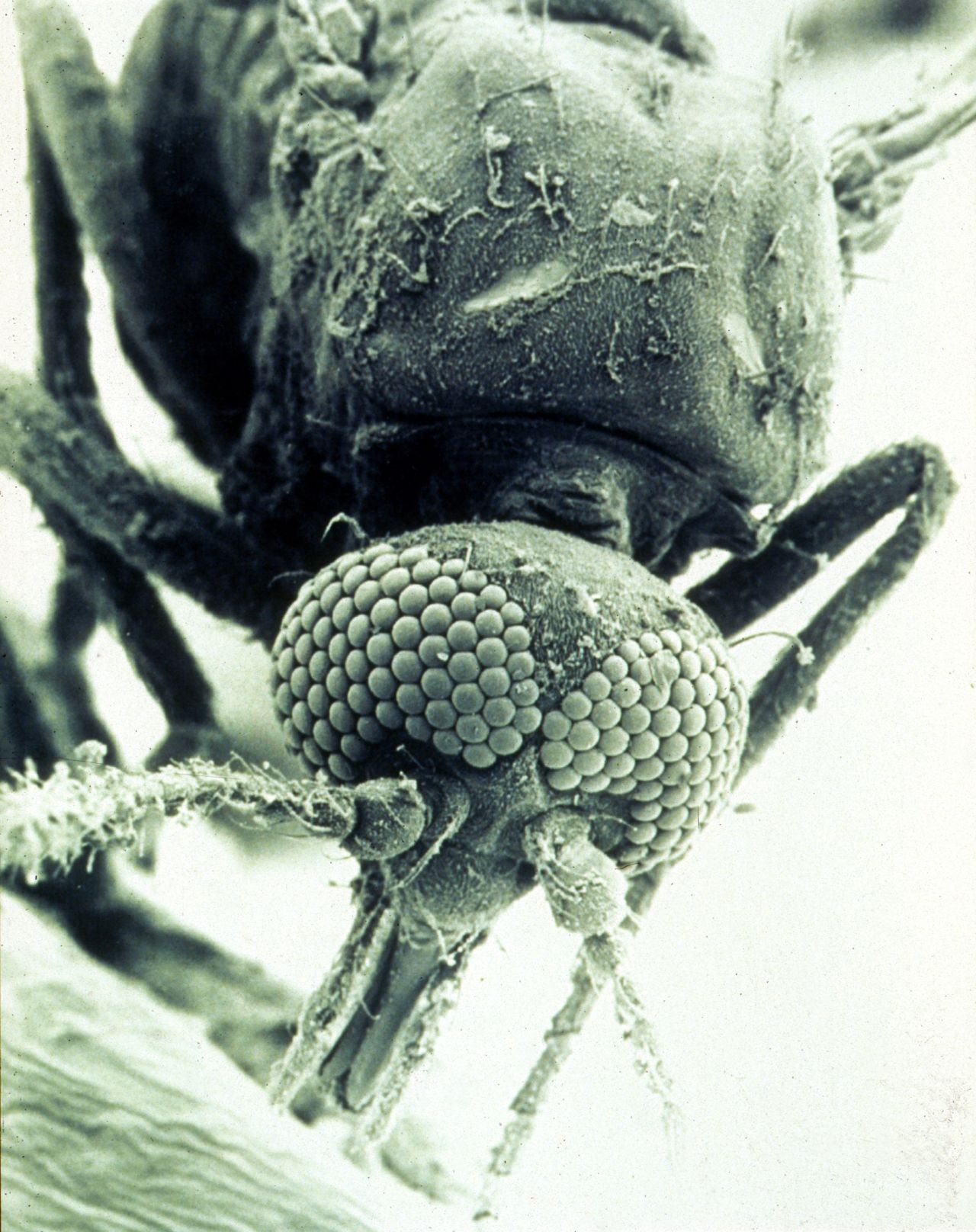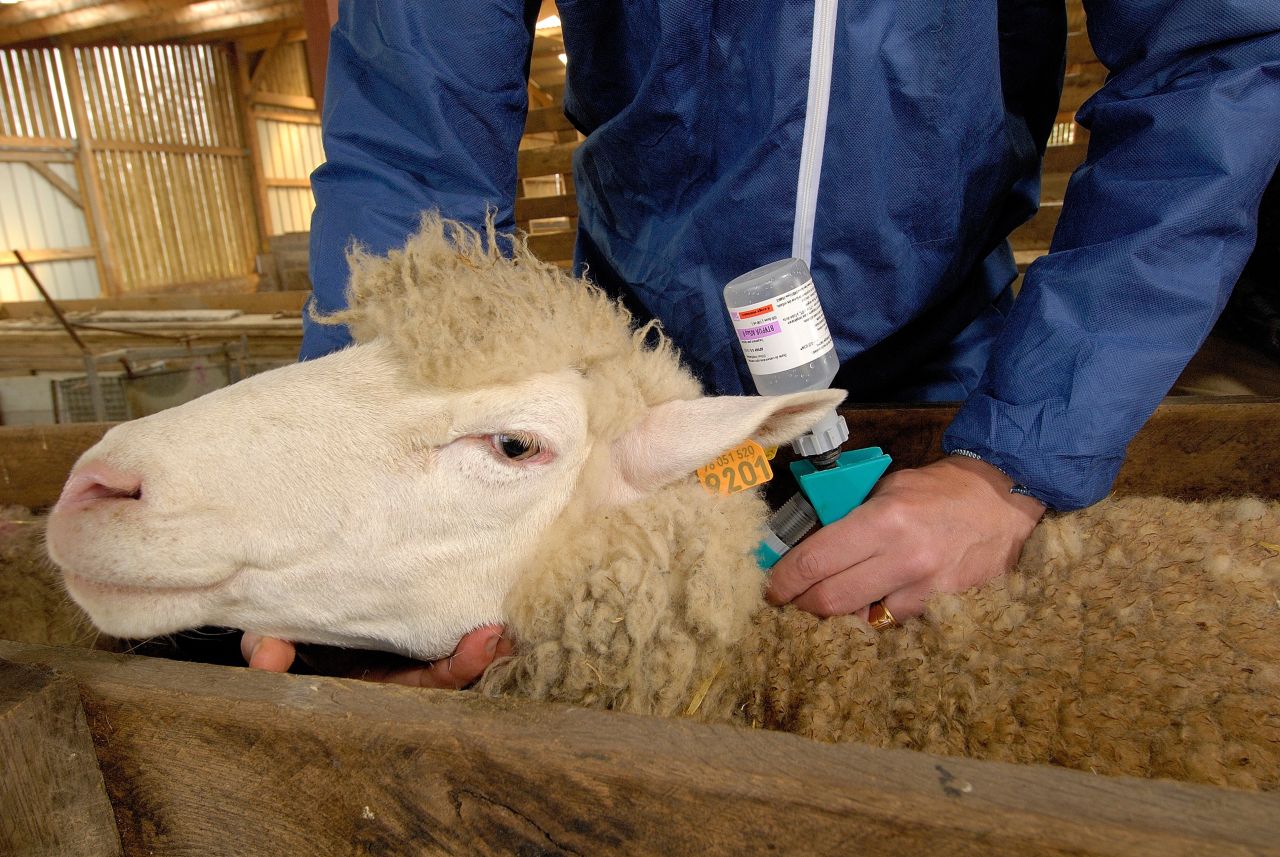Biting midges – An emerging threat for Swiss farm animals
Hard to see but impossible to ignore when they bite, biting midges are a nuisance to humans and a threat to livestock.

For some, a typical Scottish sight: a swarm of midges attacking Highland cattle. However, biting midges can be found all over the globe. Image: Adobe Stock
How many different blood sucking insects do you know? You will surely be familiar with mosquitoes and horse flies, maybe also with sandflies. But have you ever heard of biting midges? This name may resonate to you if you have ever travelled through Scotland during the summer season and have had an unpleasant encounter with the highly annoying “highland midge”! Biting midges (Culicoides) are the tiniest blood-sucking insects on the planet: their body length is only 1–3 mm, and they are also known as “no-see-ums”. Only female biting midges take blood meals, to fulfill their protein needs for producing eggs. The bite of a biting midge is quite itchy and can leave a red mark that can persist over two weeks.
Not a Scottish monopoly
There are an estimated 230 species of Culicoides biting midges in Europe, 33 of which are confirmed in Switzerland. These insects are quite sturdy and are present even at altitudes above 2 000 m. Culicoides activity varies over the year: they appear around the end of March, peak in mid-summer and gradually disappear by early November. Their population sizes are remarkable: light traps used in surveys can capture over 10 000 individuals in a single night, which is far higher than the number of captured mosquitoes.
Here in Switzerland, biting midges very rarely bite humans but prefer to take a sip of blood from livestock. Their menu includes especially sheep but also horses, cattle, pigs, and deers. They mostly bite at sunset and sunrise.

Alec Hochstrasser, a PhD student at the University of Zurich, is studying the interaction of biting midges with their hosts. Image: © Alec Hochstrasser
Life cycle
Culicoides lay eggs in moist soil or in the water that seeps out of dung heaps. The larvae that hatch feed on organic material* and microorganisms. After four larval stages, the midge larva pupates (similarly to the chrysalis* of a caterpillar). After a few days, the adult biting midge emerges. Males and females form swarms and mate. Female midges will then seek a host for a blood meal to produce their eggs and the cycle starts again.
Emergence of a new biting midge colony. Image: © Alec Hochstrasser
Small but dangerous
Biting midges pose a significant threat to animals. Their saliva may trigger an allergic skin reaction (insect bite hypersensitivity) with symptoms that cause extreme discomfort, particularly in horses. More importantly, they may carry pathogens which can cause serious diseases. One of the most prominent pathogens is the bluetongue virus (BTV). Much like malaria in humans, this pathogen cannot be transmitted directly from an infected animal to a healthy one, even if they stand close to each other or drink from the same water source. However, a female biting midge may take up the virus together with the blood of an infected animal when it bites it. After a certain time (which depends on the virus and the ambient temperature) when the pathogen has multiplied in the infected midge, it can be transmitted to a healthy host animal when the insect bites again.

Scanning electron micrograph of a biting midge (Culicoides brevitarsis), a vector of bluetongue virus. Image: Wikimedia Commons/Electron Microscopy Unit, AAHL, CSIRO, CC license
Hard to stop them
There have been severe outbreaks of bluetongue disease among sheep across the European continent in the recent past, the most serious of which occurred between 2006 and 2010. Biting midges are very difficult to control, due to their small size: they can pass through the commonly used protective nettings placed to protect stables. Governments were left with only one option to fight the spread of BTV: vaccination. In Switzerland, compulsory vaccination of millions of animals at risk was enforced for over three years (2008–2010), reaching a stunning vaccination rate of over 80%. These measures generated costs of about 20 million Swiss francs.

This sheep is being vaccinated against BTV. Image: Adobe Stock
What do scientists do?
Despite their notoriety due to the problems they cause, these tiny insects are still full of secrets. For example, little is known about where they hide during the day, and even the breeding habitats of many species are poorly characterized. For these reasons and to find new methods to protect animals from the midges' bites, it is crucial that we keep studying these harmful but fascinating little insects.
In my research, I study the behavior of midges both in laboratory settings and under more real-life conditions. For example, I offer the insects a range of stimuli that mimic a host (such as hot air rich in CO2, like the breath of a mammal), and I analyze the way they respond using automated video-tracking technology. This helps us learn which cues are used by Culicoides to locate their hosts, and we innovate on ways to disrupt them. I am also testing various naturally derived compounds as insect repellents, so that we might protect our livestock with non-harmful, non-polluting plant extracts.
Movements of three midges are shown with different colors. Orange and red labeled midges are attracted to the odor source, whereas green labeled midge is not attracted. Video: © Alec Hochstrasser
With the help of molecular biology, I am also trying to discover which plants could attract biting midges. My goal is to develop an attractive blend that will allow us to trap these insects before they infect our farm animals.
In October 2023, the very first case of Epizootic Hemorrhagic Disease (caused by another nasty virus transmitted by biting midges) was recorded in cattle in the Canton of Jura (a shortly beforehand recorded case in the Canton of Bern turned out to be a false positive). This sadly reminded us, that we must stay vigilant and keep up the effort to protect our farm animals. Biting midges are tiny but their relevance may suddenly become huge again!
*Glossary:
Organic material: Matter composed of organic (carbon-containing) compounds derived from the excreta and remains of organisms such as plants and animals.
Chrysalis: Many insects undergo a complete transformation between immature and mature stages. When the larva pupates, it turns into a chrysalis or pupa, which in turn will transform into the adult insect.
References
Sick F et al. 2019. Culicoides biting midges - Underestimated vectors for arboviruses of public health and veterinary importance. Viruses 11(4):376. doi: 10.3390/v11040376.
Purse BV et al. 2015. Bionomics of temperate and tropical Culicoides biting midges: Knowledge gaps and consequences for transmission of Culicoides-borne viruses. Annu Rev Entomol 60:373-92. doi: 10.1146/annurev-ento-010814-020614.
Maurer LM et al. 2022. Vector competence of Culicoides biting midges from Switzerland for African horse sickness virus and epizootic hemorrhagic disease virus. Schweiz Arch Tierheilkd 164(1):66-70. doi: 10.17236/sat00337.









